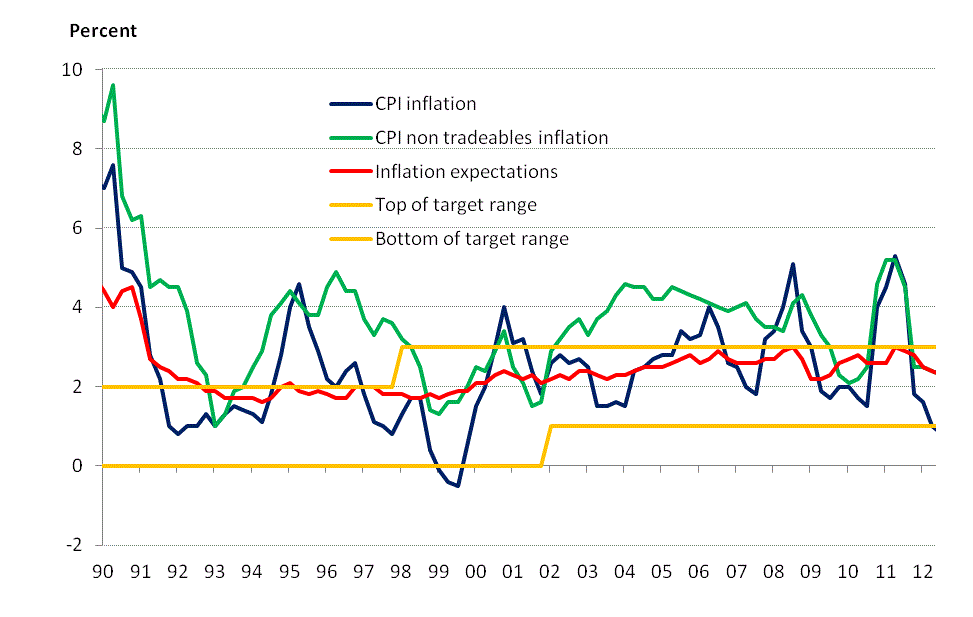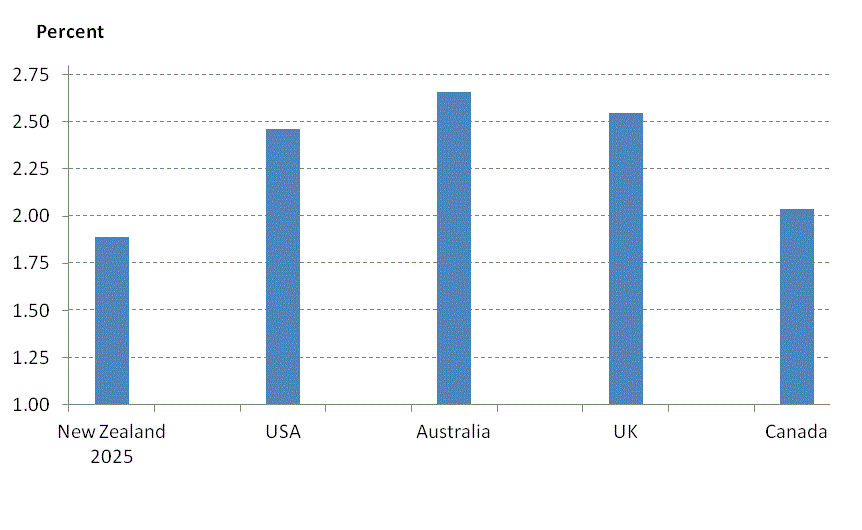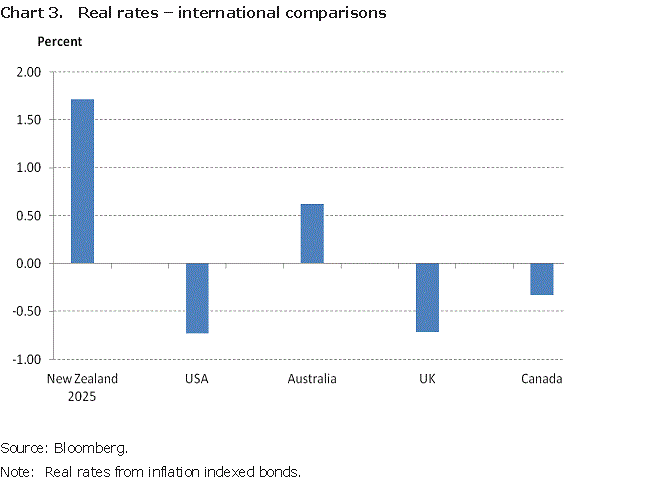Harbour Monthly Commentary: Second time lucky
New Zealand's first foray into inflation-linked bonds fizzled but the latest offering has been heavily oversubscribed, thanks in part to very attractive pricing.
Thursday, November 1st 2012, 3:43PM
by Harbour Asset Management
• It was a relatively stable month in NZ fixed interest, with common themes to last month: the RBNZ on hold; the Fed keeping global long yields low, for now; and relative calm in Europe, for now.
• The main event for our market was the launch of a new NZ government inflation linked bond (‘linker’) maturing in 2025.
• At $2.5bn, it was unofficially the largest new bond issue in NZ history, and received an unprecedented $4.5bn in demand.
• We believe this strong interest was helped by recent global inflation worries following the Fed’s Quantitative Easing program, and attractive pricing of the new deal relative to domestic and foreign comparators.
• We participated in the deal and see this new instrument as a very welcome addition to NZ’s capital market. It provides an additional tool for NZ fixed interest managers to manage risks and identify opportunities.
Some common themes linger through October
It was a relatively stable month in New Zealand fixed interest, with interest rates remaining largely within recent ranges as common themes remained.
The new Governor of the RBNZ re-affirmed the idea that they appear in no rush to either hike or cut NZ short term interest rates. The US Federal Reserve’s Quantitative Easing (QE) program continued to cap global long-term interest rates, for now. And credit spreads continued to contract, helped by a relatively stable environment in Europe and lack of local corporate bond supply.
Looking forward, global fixed interest markets are focused on the upcoming US elections and how a new administration will deal with the so-called “US fiscal cliff”. While we believe a ‘Muddle Through’ is the most likely outcome, the fear of going ‘Over the Cliff’ could make for a bumpy ride well into the New Year.
Inflation linked bonds – and some simple maths
With this stable background, the main event in New Zealand fixed interest markets was the launch of a new NZ government inflation linked bond (‘linker’), maturing in 2025.
At $2.5bn the new deal was unofficially the largest syndicated bond deal in NZ history, with more issuance set to occur in 2013 when the Debt Management Office (DMO) adds the linker to its regular bond tender program. The issue was undertaken in the wholesale market, but retail investors can participate via the secondary market.
Traditional ‘nominal’ bonds provide investors with a fixed coupon through to their maturity date. The difference with ‘linkers’ is that their principal and interest are indexed to actual CPI inflation over the life of the bond.
As such, linkers can be an attractive instrument for those investors looking for certainty in the ‘real rate’ they will receive for their investment after inflation. The classic investor in the linker market might be an insurance company looking to hedge long-term inflation-linked liabilities, or a defined benefit superannuation scheme that has a long-term commitment to provide inflation-linked income to its members. More generally, the linker market provides another tool for active fund managers to express their research on future inflation and inflation risks.
The relationship between the nominal and linker market is expressed through the simple Fischer equation, which states that:
Nominal rate = Real rate + Expected inflation + Risk premium
With the nominal rate and real rate observable from the nominal and linker markets, the so-called
Break Even Inflation rate (BEI) = Expected inflation + Risk premium
In other words, relative to holding nominal bonds, the linker would be an attractive investment if the investor believes that, over the life of the bond, expected inflation and the risk premium is higher than the breakeven inflation rate (BEI)
Old linkers and new linkers
The linker market was pioneered in the UK in the 1980s, with other countries first issuing linkers in the 1990s. In 1997, the NZ government began issuing a linker maturing in 2016. With the RBNZ having just started inflation targeting, issuing linkers was seen as a good way for the NZ government to underline its commitment to a new low inflation environment – that is, letting inflation run higher than target would directly increase the NZ government’s own funding costs, so providing a strong incentive to stick to target.
However, the linker market failed to develop in size with issuance stalling at $1.5bn in the 2000s, due to a combination of lower funding needs and cheaper funding sources elsewhere. We believe that the new NZ government 2025 linker has a number of advantages over the older 2016 vintage, including:
• Better liquidity, with an initial $2.5bn size and commitment to continued issuance at regular tenders;
• Longer 13 year maturity to provide a better hedge against future inflation.
• A maturity date that matches linkers in Australia and the US, providing an opportunity for global fixed interest managers to compare the ‘relative value’ of the NZ linker against foreign equivalents.
Strong demand for the new linker – why?
The lead managers of the new 2025 linker received $4.5bn of demand for the new issue within 24 hours of launching the deal. This was much more than expected, prompting the DMO to upsize the issue from $1bn to $2.5bn.
We believe that this strong demand and arrival of a new Governor at the Reserve Bank was purely coincidental. That is, there is no reason for Graeme Wheeler to feel sheepish that on the week that he was given responsibility for price stability in New Zealand there has been a flood of demand for investors to protect themselves against NZ inflation risk. Rather, we think there were two other factors at play.
• Attitudes to global inflation risks.
• Attractive pricing of the new issue.
Given that the security suits our current investment strategy, and we liked the pricing, we participated in the deal, taking on a material holding for our NZ Core Fixed Interest Fund.
Attitudes to global inflation risks
Worries about global inflation risks have been on the rise since the US Federal Reserve announced its latest round of Quantitative Easing (QE) in September.
In its statement, the Fed outlined that it “expects that a highly accommodative stance of monetary policy will remain appropriate for a considerable time after the economic recovery strengthens…and currently anticipates that exceptionally low levels for the federal funds rate are likely to be warranted at least through mid-2015.”
As we outlined in our monthly commentary in September, the Fed’s resolute determination to revive the US economy and bring down the unemployment may come at the expense of higher inflation down the track. These fears have been reflected in the rise of global breakeven inflation rates since the middle of the year to relatively high levels.

Attractive pricing of the new issue
Second, in our opinion, the strong demand was also prompted by the bond being attractively priced as a new issue for investors. The bond was issuance at real yield of 1.96%, which corresponded to a breakeven inflation rate of around 1.8%.
In our view, that made the bond relatively good value, whether compared to other domestic nominal bonds or foreign inflation linked bonds, as outlined below.
Domestic comparisons
One way to think about a fair value for the breakeven inflation rate on the bond is to consider the prospects for inflation New Zealand through to 2025.
While current inflation in New Zealand is quite low at 0.8%, looking forward the RBNZ has an inflation target range of 1-3%, with a new clause in the Policy Targets Agreement (PTA) that the Governor needs to focus on the mid-point of the range at 2%.
The term of the previous Governor illustrates that the hitting the mid-point of the inflation target range is not an easy task. Over the term of Alan Bollard, inflation averaged closer to 2.5%. At the moment, the RBNZ’s inflation expectation survey is sitting at around 2.3%, and non-tradeable inflation (a good proxy for underlying inflation) is running at 2.4%. On this basis, a breakeven inflation rate of 1.8% looks relatively low.
Chart 2. NZ inflation – target, actual, underlying and expectations

Source: Bloomberg.
Note: Inflation expectations from the RBNZ survey of expectations 2 years ahead.
International comparisons
The inflation breakeven for the NZ linker also looks relatively low versus comparable bond issues in the US, UK, Australia and Canada – which are closer to 2.5%. All these countries include low and stable inflation as part of the mandate for their central banks – all target 2% inflation, with the exception of Australia that targets 2-3%. It is arguable that NZ has better inflation fighting credentials, but it is questionable whether NZ will keep inflation near 1.8% if others are running at 2.5%.
Chart 3. Breakeven inflation rates – international comparisons

Source: Bloomberg.
Note: Nominal bonds yields less yields on inflation indexed bonds.
Turning our Fischer equation around, the real interest rate for the NZ linker also looks relatively high versus comparable bond issues in the US, UK, Australia and Canada. (From our simple maths above, this is the same thing as saying that yields on NZ nominal bonds are relatively high and inflation breakevens relatively low.)
Given the sharp fall in global interest rates over the past 18 months, the NZ linker is one of the few to still provide investors with a positive real return. Furthermore, the spread between NZ and foreign real yields is even wider than in the nominal bond market. For example, our models for nominal bond yields suggests that NZ 10 year yields should sit around 30 basis points above Australia at present; whereas in the linker market the new bond was issued at around 120 basis points above the Australian real yield.
Some of this additional real yield on the NZ linker may reflect a so-called ‘new issuance premium’ to compensate investors for the uncertainty of buying a new security with less established secondary market liquidity. But, in our opinion, this cannot explain the full difference between the equivalent gap in the nominal market.

Where to from here?
Since the linker was priced and allocated on 24 October, the security has performed well for holders of the bond, with the breakeven inflation rate rising from 1.80% to 1.85%.
The process of launching the NZ linker has also been a great advertisement for the NZ bond market, leading to a noticeable pick-up in demand at the DMO regular weekly tenders for its nominal bonds.
We believe that the NZ linker still reflects good value versus the NZ nominal bonds, and that the breakeven inflation rate could settle between 2 to 2.5% once this security has become more established in the market. That process should be supported by the upcoming addition to the regular tender program in 2013.
More generally, in our view, it is a very positive development for New Zealand’s capital markets to have this additional tool available for investors to express their views on the risks to the inflation outlook and actively hedge their portfolios.
Mark Brown & Christian Hawkesby
Harbour Asset Management, Fixed Income
Important disclaimer information
| « Market taking ‘short-term’ view on resources | Hamish Douglass Unplugged - Latest Video from Adviser Briefing - August 2012 » |
Special Offers
Comments from our readers
No comments yet
Sign In to add your comment
| Printable version | Email to a friend |









